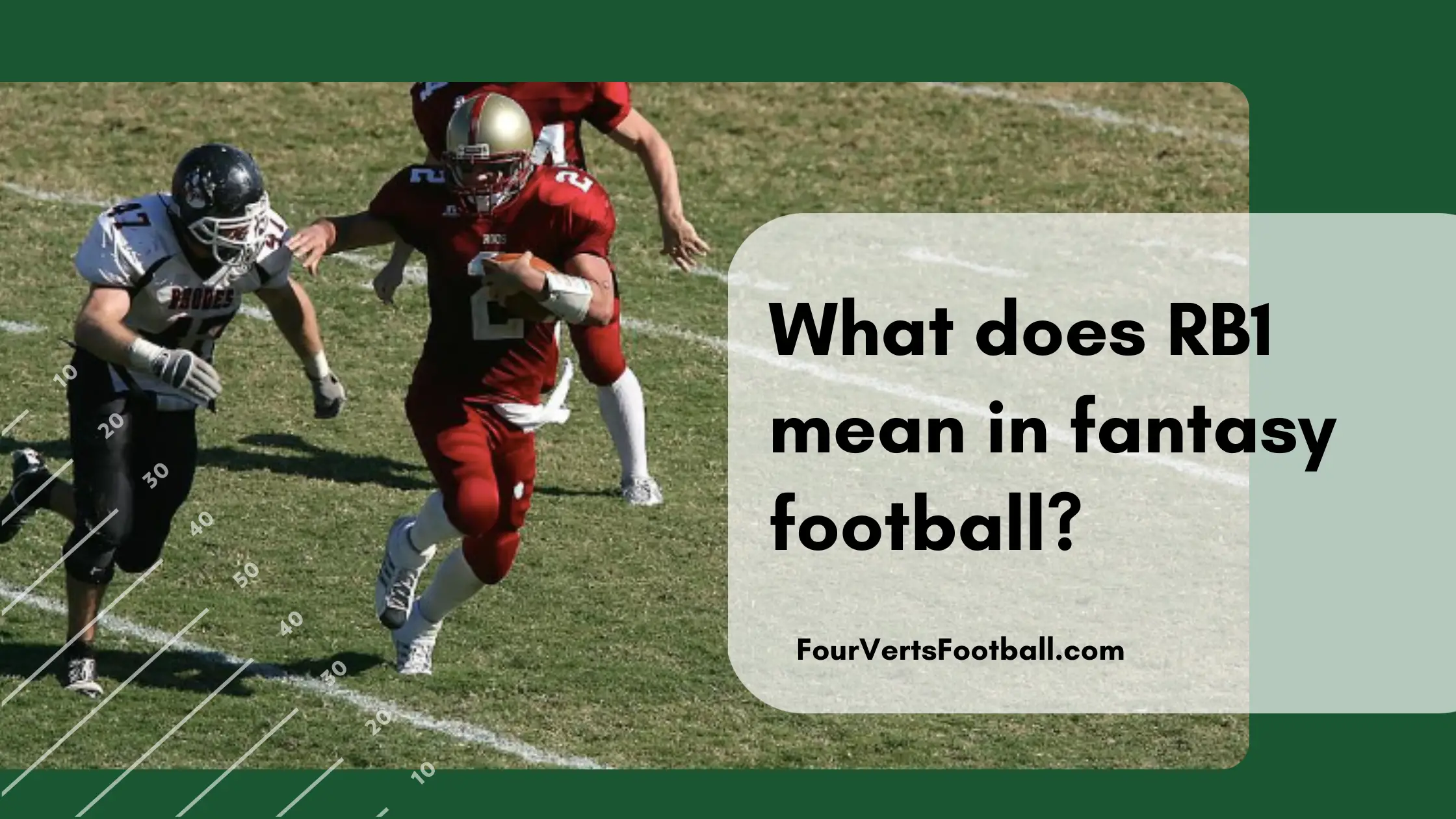An RB1 in fantasy football is a running back that ranks as a top twelve option at their position. Most fantasy leagues have twelve teams meaning an RB1 includes runningbacks ranked 1-12 and an RB2 includes runningbacks ranked 13-24.
An RB3 in fantasy football is a player who is ranked from 25th to 36th in the runningback rankings.
When playing in a league with ten players an RB1 may be considered a running back ranked 1-10. Though generally speaking when a fantasy football writer uses the term RB1 they are talking about running backs ranked one to twelve.
Alternative meanings of RB1
In fantasy football, the term RB1 is always going to mean a running back that is ranked in the top twelve of their position.
But the use of this term in other ways in football has led to some confusion. The term RB1 is also used when talking about where a player is on the depth chart.
If a player is at the top of the depth chart for the running back position then they are going to be considered an RB1.
And if a second-string player is number two on the depth chart at the running back position then he may be referred to as a team’s RB2.
This is very different from using the term RB1 when talking about fantasy football. A player that is at the top on his team’s depth chart is not necessarily going to be a RB1 in fantasy football.
There is are going to be thirty-two starting running backs across the league each week but only twelve will earn the RB1 designation in fantasy football.
Traits of an RB1 in fantasy football
They are the feature back
One of the keys to being an RB1 in fantasy football is that they are the feature back. Some teams prefer to use the running back position by committee. This means several players will split the duties of the running back.
This results in the rushing and receiving yards being split between these players. This sharing of the backfield almost guarantees that none of the running backs will be an RB1.
An RB1 is going to be the number one back on the football team. These players will get a large number of touches in every game.
Generally, RB1 ones will be involved in a team’s rushing offense and their passing offense as well.
A large portion of the offense should run through the starting running back is he is going to be considered an RB1 in fantasy football.
Matchup proof
Another key factor in being an RB1 in fantasy football is that the player is matchup-proof. Some runningbacks may find that if a team commits to stopping the run they will be unable to produce.
This results in lacklustre scores every few weeks typically eliminating the player from RB1 contention.
In order to be an RB1 teams need to find ways to get the running back the ball. RB1s in fantasy football are also unlikely to be affected by negative game script.
Elite running backs will be thrown balls out of the backfield or lineup out wide if they are unable to get any production running the football.
Even if their team is down a large number of points these players are going to be a valuable weapon used in their attempt to mount a comeback.
This isn’t always true for lower tier running backs which may rely on a large number of carriers to achieve solid fantasy production.
Redzone Touches
Another key to being considered an RB1 on a fantasy team is the ability to score touchdowns. If a running back gets the ball in the redzone they will be much more likely to get in the endzone.
Scoring touchdowns is a huge part of producing fantasy points as a running back. Even if a back is able to rack up a lot of yards but lacks touchdowns they are not going to be in the top twelve.
Most RB1s play the goal line back role for their team while also being the primary ball carrier.
That is all on RB1s in fantasy football to learn more get answers to the question what is a TE1 in fantasy football or what is an RB3.

